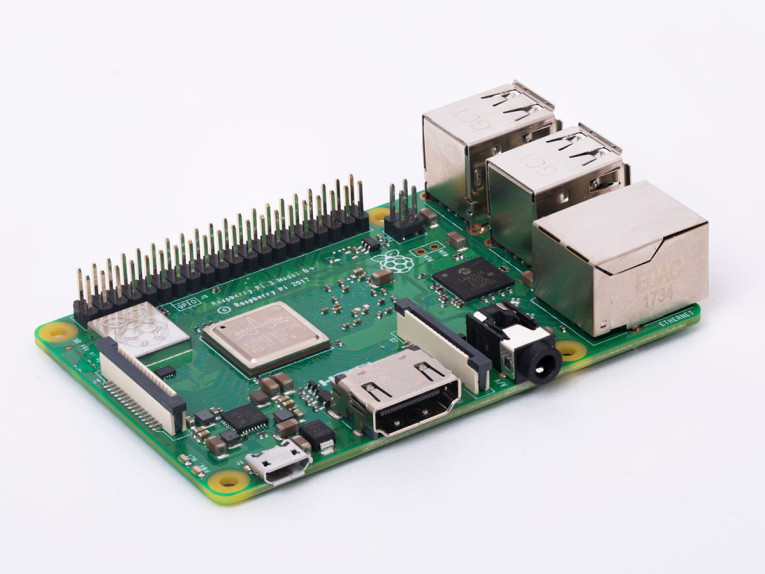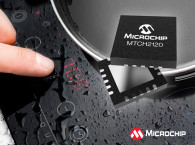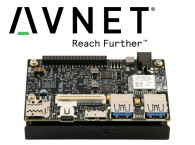
The latest Pi has the same $35 price, 86 x 56 dimensions, 40-pin header, and other features as the previous model, and has an almost identical layout, thereby ensuring backward compatibility. The Raspberry Pi 3 Model B+ (Raspberry Pi 3B+) advances to a Broadcom BCM2837B0 SoC, which is the same as the previous BCM2837 except for a boost in clock from 1.2GHz to 1.4GHz. A heat spreader has been added to keep things cool. (Broadcom may have been blocked from acquiring Qualcomm, but at least it will always have the Raspberry Pi.)
Like most new Linux hacker boards, the B+ moves from 10/100Mbps to 10/100/1000Mbps Ethernet. It’s among the leaders, however, in moving from 802.11n to faster 802.11ac WiFi, and it’s now dual-band 2.4GHz/5GHz instead of only 2.4GHz.
“We have roughly three times the wired and wireless network throughput, and the ability to sustain high performance for much longer periods,” writes RPi Trading CEO Eben Upton in its announcement. “Dual-band wireless LAN and Bluetooth are provided by the Cypress CYW43455 ‘combo’ chip, connected to a Proant PCB antenna similar to the one used on Raspberry Pi Zero W.”
Upton posted some iperf benchmarks showing improved 2.4GHz performance, as well as the new, and much faster 5GHz connection. In addition to boosting the WiFi, the Raspberry Pi 3B+’s Bluetooth has advanced from 4.1 to 4.2, once again with BLE support.
The wireless components offer a significant additional benefit. “The wireless circuitry is encapsulated under a metal shield,” writes Upton. “This has allowed us to certify the entire board as a radio module under FCC rules, which in turn will significantly reduce the cost of conformance testing.”

The new GbE port is provided via a Microchip LAN7515 controller. Like most ARM hacker boards that have GbE, it’s delivered via USB 2.0, which is slower than a PCIe connection, giving you a maximum throughput 300Mbps. Still, it’s a boost over the RPi 3 Model B, which was typically limited to about 80Mbps. Upton has posted benchmarks showing a threefold increase in throughput compared to the Fast Ethernet equipped Model B.
The GbE port has a magjack that supports Power-over-Ethernet (PoE), which has been around awhile, but seems to be surging of late. The PoE signals are available in a new 4-pin header. Writes Upton: “We will shortly launch a PoE HAT which can generate the 5V necessary to power the Raspberry Pi from the 48V PoE supply.” (While a PoE HAT would be great, Hackaday speculates that the placement of the 4-pin PoE header could obstruct some other HAT boards.)
The Ethernet port’s PXE boot support has been debugged and improved, and it is now enabled by default. USB mass-storage booting has also been enhanced. The new quad-core -A53 Broadcom BCM2837B0 SoC improves the regulation accuracy of the PMIC, which has been switched to a MaxLinear MxL7704 part. Upton says the 3B+’s improved PMIC, power regulation, and heat spreader enables it to run longer at top speed without overheating. Yet, he notes that the new board consumes “substantially more power,” and recommends a high-quality 2.5A power supply, such as the official Raspberry Pi Universal Power Supply. The SBC is rated for 0 to 50°C temperatures.
Everything else on the Raspberry Pi Model 3B+ is the same, including the paltry 1GB of LPDDR2 RAM. The board is equipped with an HDMI 1.4 port, 4x USB 2.0 host ports, a micro-USB port with 5V power input, and a microSD slot. Other continuing interfaces include the MIPI-CSI camera links, as well as the 3.5mm 4-pole composite video and audio output jack. The widely imitated 40-pin expansion header has not changed.

The Broadcom BCM2837B0 SoC supplies the same, highly regarded VideoCore IV GPU, which Upton calls “the only publicly-documented 3D graphics core for ARM based SoCs.” He adds: “We want to make Raspberry Pi more open over time, not less.” Mechanical drawings and schematics have already been posted.
Upton concludes by promising that the “Raspberry Pi 1B+, Raspberry Pi 2B, and Raspberry Pi 3B will continue to sell for $25, $35, and $35 respectively.” He also notes the possibility of advancing the $20 Raspberry Pi 1A+ to a Raspberry Pi 3A+.
In addition, all of the tiny Raspberry Pi Zero boards will continue to sell at the same price, says Upton. The 3B+ announcement comes two months after the arrival of the Raspberry Pi Zero WH model, which added a soldered 40-pin GPIO header to the Zero W for easier prototyping.
www.raspberrypi.org






